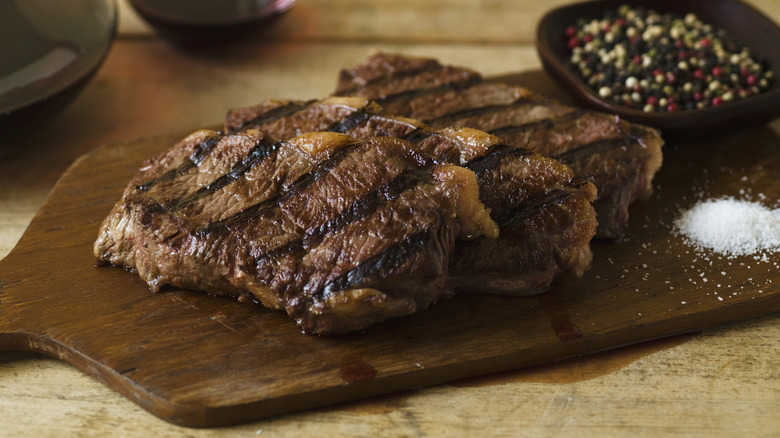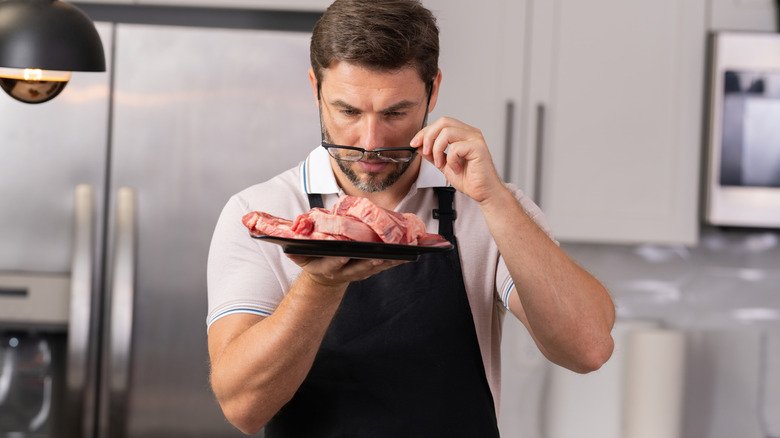Contrary To Popular Belief, It's Safe To Eat Steak When It Turns This Color
Whether you have a cheap or expensive cut of steak in your fridge, food science is going to do its thing: You only have a finite amount of time to cook it or freeze it before it starts to show signs of spoilage and needs to be thrown out. While beef changing color can indicate that it's beginning to go bad, Food Republic spoke to Chelsey Maschhoff, co-founder and head chef at Lottie's Meats & Provisions, who explained, "Meat often turns brown due to oxidation — it's a natural reaction when meat is exposed to air."
She added, "This doesn't mean it's bad!" After all, beef steak remains good in the refrigerator for up to five days, so if your meat starts to turn brown after day two, it's likely still perfectly safe to eat. Oxidation, as Maschhoff noted, is a natural process; it occurs when myoglobin, the protein that gives beef its red color, loses oxygen over time. As the oxygen disappears, the myoglobin shifts colors, eventually turning brown. While the color change may be unappetizing, if it's the only change your steak has undergone within five days in the fridge, it should cook up and taste just like usual.
Signs your steak is no longer safe to eat
Now that you know brown steak is still good steak — it's just oxidized — you should also be aware that color change can still indicate spoilage, especially when combined with other signs of bad meat. Chelsey Maschhoff explained, "As long as it doesn't smell sour, feel sticky, or develop a slimy texture, it's still safe to eat." However, if the meat starts to smell rotten (it is truly unmis-steak-able) or develops an ooze — especially a green one — that certainly wasn't present when you chose your perfect steak at the store, it has likely overstayed its welcome in your fridge.
Maschhoff also mentioned that brown spots on your steak typically don't mean anything bad either, "but if the meat has a strong off-putting odor or a tacky surface, it's time to toss it." Another telltale sign your steak should be thrown out? The appearance of mold, which can develop in a variety of colors, but has a characteristic fuzzy texture.
The moral of the story is this: If your steak has turned brown in the fridge, that's the only change it has undergone, and it's within five days of you bringing it home, it's likely still safe to eat. However, if it has oxidized and also exhibits any of these other warning signs, it's best to err on the side of caution and throw it away.


